- List of Important C# Interview Questions
- Conclusion
Top C# Interview Questions 2025 | Applications | Preparation Tips

C# is a sophisticated and adaptable programming language developed by Microsoft as a part of its .NET strategy. The advantages of high-level and low-level languages are combined in C#, giving programmers a quick and effective way to develop platform-agnostic programs.
Due to its simplicity in interacting with other services, including online services, databases, and libraries, among many others, it has grown to be one of the most widely used programming languages. The syntax in C# is relatively simple compared to other object-oriented programs, allowing for fewer errors during coding time.
The primary use of C# lies in developing Windows applications or web-based software using Visual Studio tools from Microsoft easily. Still, it does support cross-platform development, too, when combined with Mono runtime like Xamarin mobile app development framework, which allows code sharing between different software platforms, including Android & iOS devices, thus proportionately taking advantage of the underlying system while also maintaining consistency over usage/functionality under any type of environment perfectly.
In general, C# provides essential language elements necessary for modern-day programming. Hence, learning C# becomes a great choice if you need power and flexibility in your career!
List of Important C# Interview Questions
Q1. Explain the C# language.
C# (pronounced "See Sharp") is a high-level object-oriented programming language developed by Microsoft. It was first made available in 2002 and has risen to the top of the languages used to create software programs.
C# is a type-safe, managed, and object-oriented language that increases productivity with strong typing support and automated garbage collection when coupled with .NET Framework or Mono runtime library. Its rich feature set provides everything needed to create Windows desktop apps, web services, mobile apps, etc. - from simple GUI applications to complex distributed systems such as applications found on modern enterprise networks.
Q2. What are the applications of the C#?
The applications of C# are vast and varied. Commonly, it is used to develop software for Windows-based operating systems, web services, mobile apps (iOS & Android), embedded systems, machine learning/artificial intelligence solutions, and cloud-native applications.
Additionally, its interoperability with .NET Framework or Mono runtime library can be used in legacy development scenarios and modern distributed microservices architectures to serve the new world's digital needs.
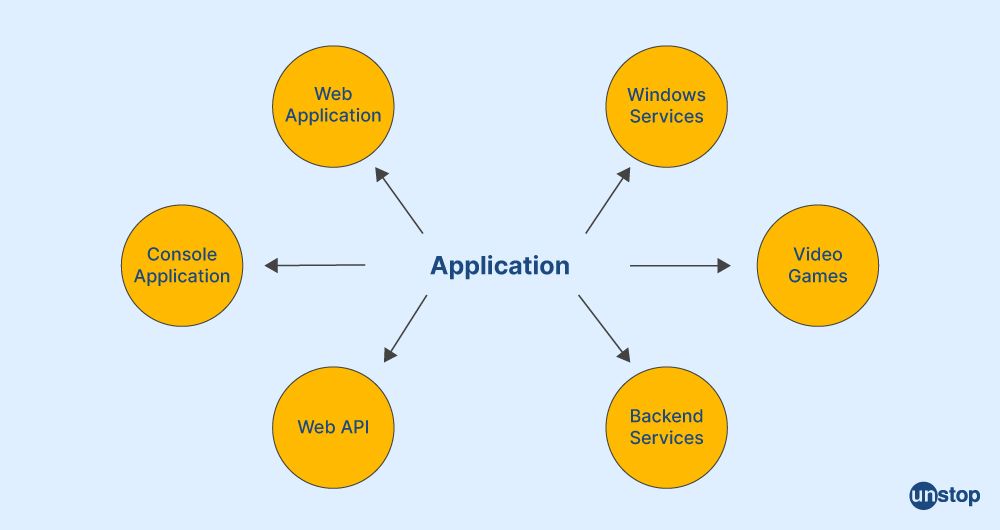
Q3. What are the features of the C#?
C# offers a wide range of features, making it stand out from other programming languages. Some of its key features include:
- Strongly Typed: C# supports strong type safety, which helps to eliminate type errors and ensure secure code execution at runtime.
- Object-Oriented Programming (OOP): By supporting object-oriented concepts, you can create reusable components for use in your applications and take advantage of encapsulation, inheritance, abstraction, and polymorphism features provided by the language.
- Automatic Memory Management (Garbage Collection): C# has built-in support for garbage collection, which helps reduce memory leaks due to incorrect allocating or freeing up resources such as memory blocks used by objects during their lifecycle management.
- Platform independence: Applications written using .NET Framework or Mono libraries are platform independent and can run on any operating system supported by them without much change required in source code or executable output files generated after the complete compilation process.
- Rich Library: C# is supported by a rich library, including useful classes, objects, and methods that help developers to build applications quickly without needing to write code for every small task from scratch.
- Interoperability with other languages: C# can interact easily with native components written in different programming languages like C++ or Java, which makes it possible to use existing libraries when creating software solutions.
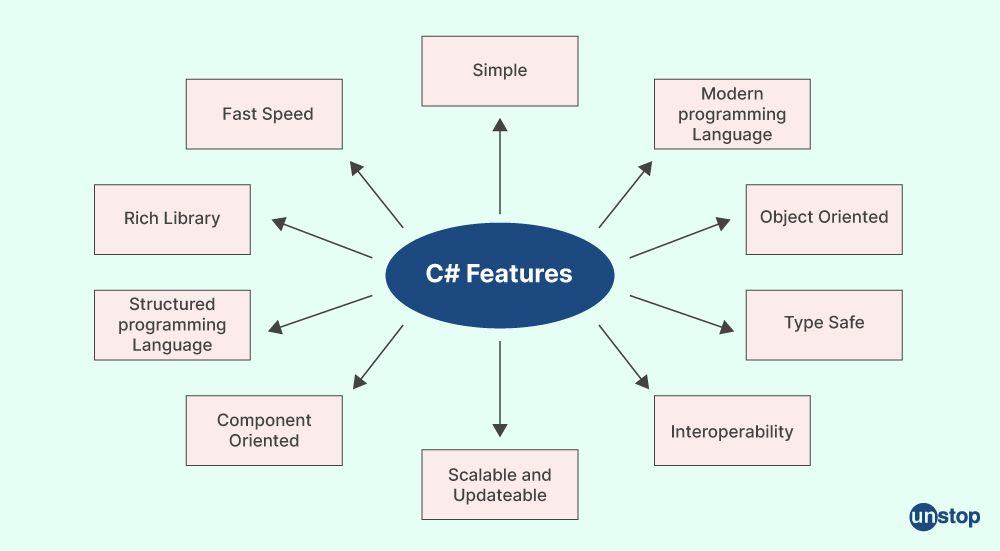
Q4. What are the advantages of C#?
The advantages of C# include the following:
- Increased Productivity: Due to its rich library, powerful language features, and strong typing support, the development cycle for applications written with C# can be much faster than traditional languages like Java or C++ out of the box. This allows developers to quickly develop complex solutions without sacrificing quality.
- High Performance & Reliability: By taking advantage of the .NET platform and Mono runtime libraries, one can get improved performance levels due to the garbage collection process as well as better reliability due to memory leak prevention mechanisms built in these frameworks, which help detect errors during code execution time before they cause any problems at runtime.
- Improved Security & Safety Measures: The type safety feature in this language helps reduce the chances of malicious attacks from external sources by checking data types used inside a program's source code when compiled into an executable file format on a computer system.
Also Read: Data Types In C++
Q5. What is an abstract class in C#?
A specific kind of class that cannot be constructed in C# is known as an abstract class. An abstract class provides a base structure for classes to inherit from and define their specific behaviors, properties, or fields. An abstract class can contain virtual methods and public members but is typically used to define an interface for other derived classes.
Q6. How do you declare a jagged array in C#?
A jagged array in C# is created by declaring the number of elements needed within each sub-array (the outermost array size), and then creating individual arrays or collections with different sizes according to our needs.
To declare a jagged array, we use the following syntax:
datatype[][] nameOfArray = new datatype[SizeX][]
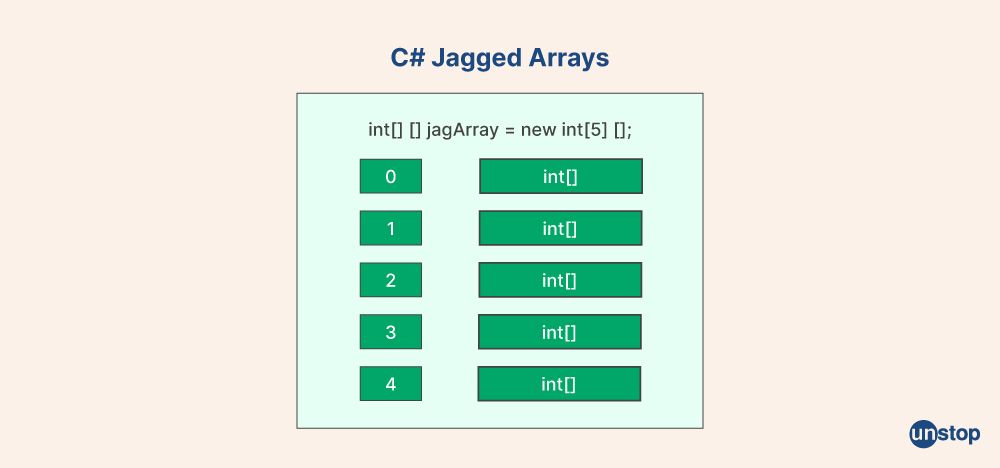
Q7. What are the benefits of using virtual methods in C#?
Virtual methods provide flexibility when designing related object hierarchies, enabling derived types (classes) to override existing behavior defined on parent-declared types without modifying its source code at runtime.
Since virtual functions are called based on the actual type rather than the nominal type, this allows Late Binding allowing developers higher levels of control over application execution flow resulting in better design overall. It also leads to greater reusability potentials amongst components within applications developed using object-oriented principles such as those exposed through .NET languages such as C# language itself.
Also Read: .NET Interview Questions For Revision
Q8. How can unmanaged code be used with managed code within a single application developed using C#?
Unmanaged code can be used with managed code within a single application developed using C# by leveraging the interoperability feature, which is exposed through the .NET Framework. This allows developers to leverage existing legacy unmanaged libraries and newer managed components, such as those exposed on the base class library or even from third parties, while maintaining most of the development consistency across all layers involved in an end-result solution.
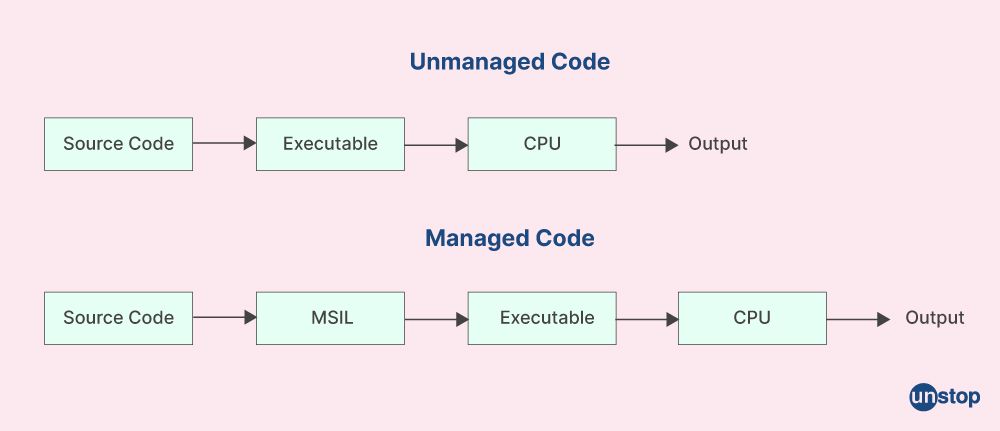
Q9. How do you create an array of arrays in C#?
An array of arrays in C# can be created by declaring one element at a time either during the initialization stage or dynamically during the runtime execution flow.
The syntax for creating an array of these predefined types is:
int[][], float[][] and others: datatype[x,y]
nameOfArray = new datatype [X, Y]
where X defines the number of elements inside each sub-array, y being the total number of these different-sized collections.

Q10. When should we use function pointers instead of normal functions when programming C#?
Function pointers should be used instead of normal functions when programming using C# whenever behavior defined on them needs to remain dynamic, thus allowing increased flexibility over how its implemented functionality gets called by applications executing specific processes.
For instance, this technique could prove helpful sequencing operations based upon user input without knowing priori that information would have been available at development time.
Q11. What is the reference type in C#?
The reference types in C# are classes, interfaces, delegates, and strings. Reference types contain a pointer to the location of an object in memory; they do not hold the actual data itself as value-type variables do.
This allows them to be passed around in an easier way as well as enables multiple references pointing towards the same instance of the variable, which can then be mutated by any operation targeting it further down the execution process sequence if so desired from the developer's standpoint. This thus allows greater flexibility over how objects behave within the logic of our application during its runtime life cycle.
Q12. What is a Derived Class in C#?
A derived class, also known as an inherited or child class, is any class that inherits the behavior of another base or parent class. It reuses the existing functionality of the parent and can modify it to add its specific features and functionalities.
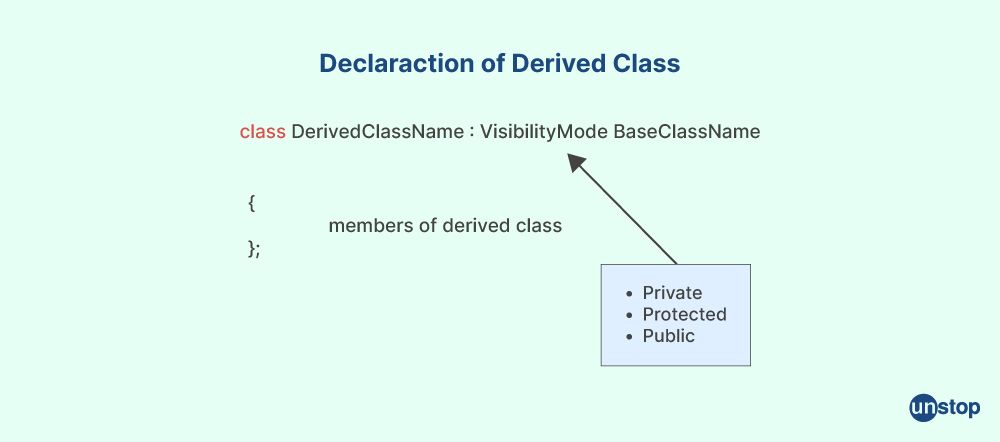
Q13. What is a partial class in C#?
A partial class allows multiple definitions for one particular application code within different files located separately across various development environment locations, like source control system repositories.
This approach might be helpful when several developers need to work together to develop the same project simultaneously without interfering with each other's coding. Thus, they would concentrate only on their partial changes related to specific tasks assigned while keeping common parts intact and undisturbed.
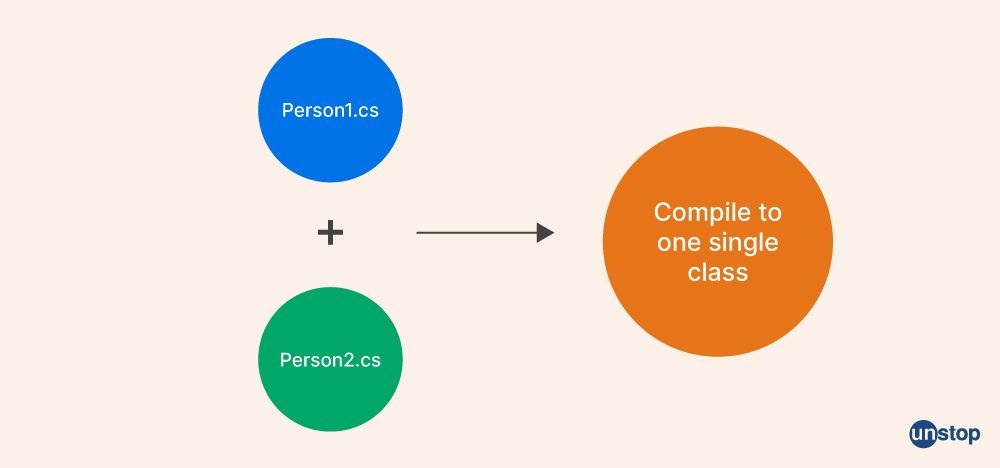
Q14. How can nullable types be used?
Nullable types extend value-type with a null value, allowing representation for missing or unknown matters at runtime, thus providing more flexibility than conventional non-nullable datatypes like ints, booleans, etc.
Q15. What are smart arrays, and how do they work in C#?
Smart arrays are a type of data structure that allows the programmer to store multiple values within them while allowing for additional operations beyond what is possible with conventional array structures, such as searching, sorting, manipulating element order, etc.
Smart arrays can be implemented most efficiently using generic lists, which allow setting up custom classes/ objects containing specific methods required by application logic to interact with these collections.
Q16. Can you explain static methods and their usage within a program written using the C sharp programming language?
Static methods represent functions defined at global scope accessible from anywhere across the same assembly, thus eliminating the need to create an entire dedicated type by a given code to perform specific tasks.
The syntax used for calling static methods looks like this:
ClassName.MethodName();
For example:
public class MathUtils {
public static int Add (int a, int b) {
return a +b ;} }
Q17. How does an abstract method differ from other methods available within the same context of the coding environment (C sharp)?
An abstract method in C# represents any function that lacks implementation details and can only be referenced via inheritance. It merely serves as a placeholder indicating what should occur when derived classes override its body accordingly with individual needs at hand, making sure all related types use similar signatures while keeping their specifics as separate entities.
This allows better maintainability and handling to do development team's workflows are consolidated around the same base code while still providing space for further expansion when required.
The syntax used to define an abstract method looks like this:
public abstract void MethodName();
Q18. Can you describe what static variables mean when working with code written using the .NET framework that uses the C sharp programming language?
Static variables are a special type of data members declared at global scope allowing access across multiple assemblies throughout the application lifecycle without creating individual instances each time they are needed.
This approach also enables better resource usage maintainability since one single resource will save memory storage/CPU cycles involved during repeated instantiation processes associated with traditional non-static counterparts where every call generates a new instance having a significant performance hit, especially on mobile/ embedded devices.
The syntax to define static members looks like this:
public static string MyString = "Hello World";
Q19. Why is it important to understand compile time considerations when writing programs utilizing features provided by Microsoft's implementation of Visual Basic for running managed applications developed for use on .NET capable machines?
Compile time considerations become essential whenever software development projects utilize any external libraries or frameworks regardless of the programming language used since code written might be partially or entirely transformed into machine-level instructions while being compiled ready for execution, thus providing better performance and memory optimization, hence compile times are crucial part inside engineering cycles optimizing application resources using both memory related storage as well computation processes allowing reducing latency along increased throughput leading improved user experience that would have been otherwise hindered.
Q20. What is meant by Base Type within software development projects built around a C sharp technology stack like ASP.NET or Xamarin Cross Platform runtimes compatible with Android/ iOS devices, to name some examples?
Base Type represents the primary datatype used inside any coding context where it will be the starting point for all derived types commonly referred to as the 'parent' class since any type arising from this ground state must inherit its characteristics. This allows developers to create multiple objects sharing the same set of behaviors, though not necessarily identical elements that could define each one independently, ensuring better maintainability when dealing with more complex projects that requirie scalability while remaining organized and manageable at the same time avoiding overdesigned applications prone to being unmaintainable because of their complexity along endless feature creep issues.
Q21. How does String Class work in C Sharp, and what are common operations associated with string variables?
String class provides a way to handle text-based data represented into byte arrays forming sentences, words, etc. This library presents various methods available to anyone dealing with texts, such as finding substrings within predefined strings, which provide feedback containing indexes enabling other manipulation processes related to character sets, which become essential, especially when having databases involved in handling extensive collections of natural language-based datasets containing volumes of written information.
String class in C# provides a wide range of tools for manipulating text-based data, including finding substrings and pattern matching and formatting capabilities to ensure culturally appropriate representations in the string class.
Q22. What is a memory space in C#?
Memory space in C# refers to the memory allocated by a program for storing data and instructions during its execution. This memory space can be divided into stack, heap, static area, etc., where each section holds specific information or variables associated with the program.
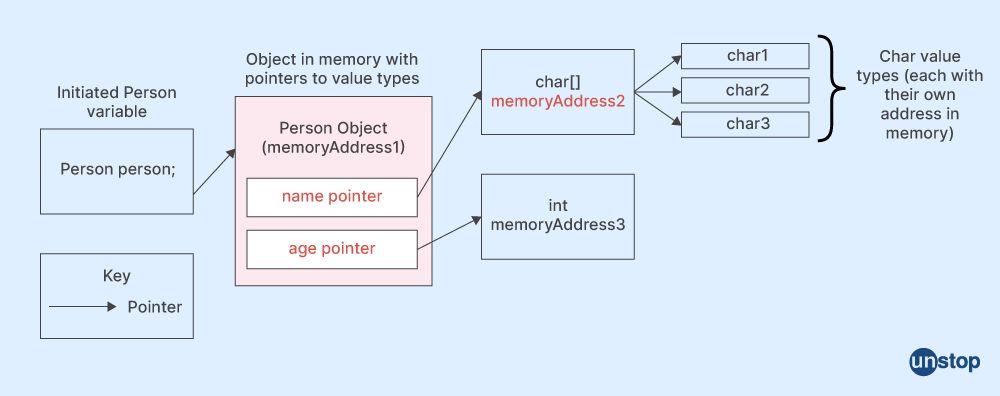
Q23. How does the garbage collector work?
The Garbage Collector (GC) in C# runs periodically on background threads to reclaim unused objects from memory so they can be reused later on demand instead of allocating new ones whenever needed. It also performs other related operations like compacting live objects together to minimize fragmentation that might occur over time due to frequent allocation/deallocation cycles within an application's lifetime.
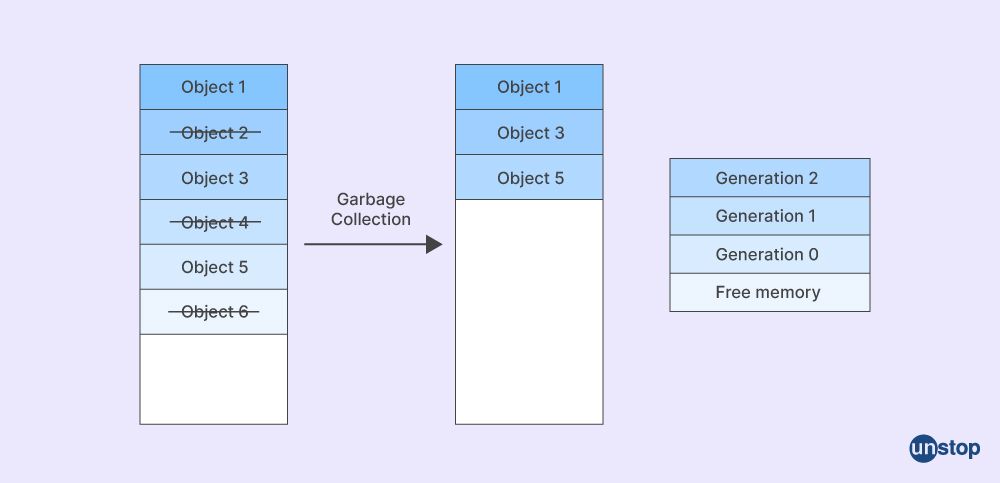
Q24. What causes Compile-Time Errors in C#?
Compile-time errors are those types of errors detected by the compiler before even running your code inside the interpreter .e; these usually have syntactical issues or incorrect usage cases.
Q25. Why is a static class used in C# programming?
Static Class in C# are used primarily for defining functions that don't need an instance of a class to be called; such static methods can also access all private members within the same context as if they were public ones, although still, any changes made from that place will not affect the object state associated with the current running environment.
Q26. How can the Virtual Keyword be applied to classes and methods within a program written with C#?
Virtual keyword is used to define specific properties inside classes whose behaviour needs to be overridden according to polymorphism feature provided by OOP paradigms, i.e. when you apply virtual keyword on method/property.
Q27. What types of user-defined data types exist for use with the language of C#?
Some user-defined data types in C# include classes, structures, enumerations, interfaces and delegates. Classes provide a way to define complex combinations of various data members as per requirement within a given context like variables, methods etc. At the same time, structures are used to create small, structured, yet self-contained objects that can potentially be stored on a stack or some other medium, depending upon overall program design considerations.
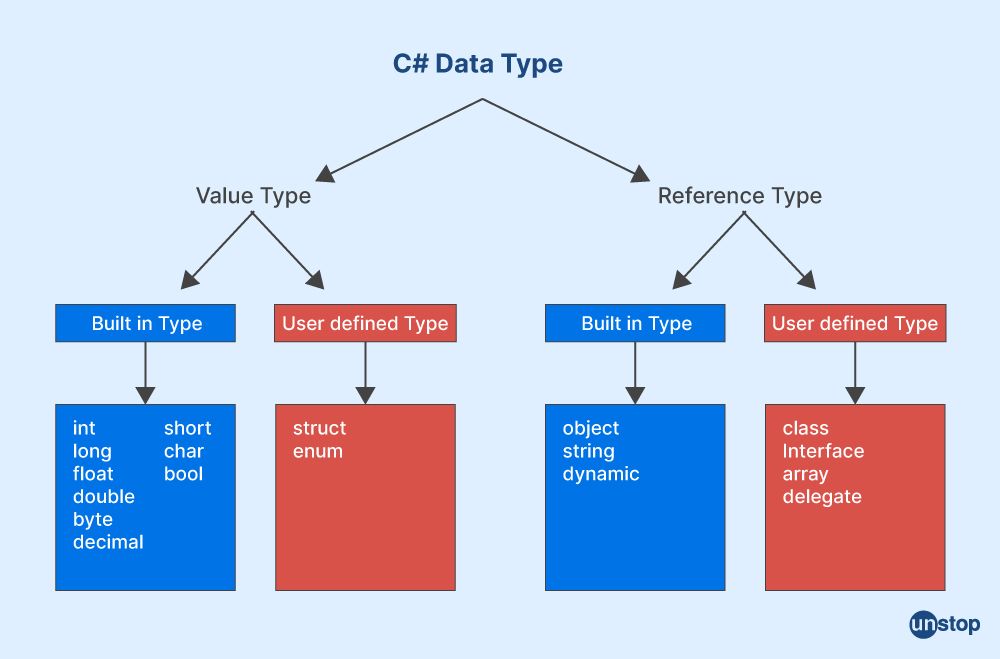
Q28. Does every method declared within a class has to specify an explicit return type when writing code using C#?
Yes, every method declared inside the class should have an explicit return type defined before compilation takes place; otherwise, the compiler might throw exception-related syntax errors wiz what specific output needs to be returned by the current method call because any function/subroutine is supposed to emit results after successful execution phase completed so that caller code could make use same.
Q29 . What are the different Types Of Classes defined?
There are three different types of classes, namely sealed, abstract and non-abstract (i.e., normal ) ones, where the first two were more specialized forms applicable under special scenarios when functionality encapsulated there need either not accessed directly from outside but via deriving another subclass object instances.
Q30. What Is A Sealed Class, And When Should It Be Used Within An Application Written With The Language Of c #?
A Sealed Class cannot be inherited from; this means that all the members inside such a class are available only to instances of that specific type and no other sub-types. It can be used in an application written with C# to ensure your code is secure and performance-optimized or to prevent any unintended misuse among different modules within the same program.
Q31. How Can You Improve Code Efficiency By Avoiding Block Of code Redundancy In An Application Written With The Language Of c #?
Code redundancy could be eliminated by avoiding blocks of repeated codes using certain programming techniques, e g refactoring existing logic lines into separate functions/methods that could, later on, be called as per need from respective locations instead of writing each line again, thus saving precious processing time plus reducing size off overall executable file generated out compilation phase (JIT) likewise.
Q32. Can A Programmer Directly Access the Memory Address the programming function available through C#?
Yes, directly accessing the memory address is possible using pointers syntax provided by C # language. However, the first programmer must ensure their system contains basic features required for running code involving pointer arithmetic; otherwise, the compiler might throw exceptions related to unresolved access violations.
Example:
namespace HelloWorldApp {
sealed class MySealedClass{
public int myVariable1 = 10 ;
myProtectedVar= 20 ;
public void DisplayData(){
Console. WriteLine ("Value of Variable 1 : {0}" ,myVariable1 ); } }
class InheritanceDemo: MySealedClass{
static void Main ( string [] args ) {
MySealedClass objMyscl = new Myscal();
objMyScalc . Dispalydata () ; Console . Read Key (); }}
Q33. What are Multidimensional Arrays in C#?
Multidimensional Arrays in C# are arrays with multiple dimensions, allowing for storing a large amount of data under one variable name. They can be used to represent tables or even 3D models quickly, allowing developers to store related data together more efficiently without having several individual variables floating around their codebase.

Q34. How do Access Modifiers work in C#?
Access modifiers in C# define which parts of an application’s code hold what access levels depending on how they are defined within its context. Private elements will only hold a limited scope. In contrast, public elements will be available throughout various classes and functions as accessible members or properties, giving other methods higher degrees of interactivity when calling them from outside sources such as interfaces, etc.
Q35. What is an Output Parameter, and how does it differ from a reference parameter?
Output Parameters differ from reference parameters because they come out (output) simply carrying information alone rather than bringing changes into whatever has been called them, as Reference Parameters do - sending both input and result at once back to whoever made use of it within their coding frameworks.
Q36. What is the purpose of a Default Constructor in C#?
Default Constructors in C# have no parameters being passed along but merely act as initializers for either holding default values until some custom ones get set by user inputs or kick-starting specific framework processes if needed, especially when dealing with large sets of objects that could be shared throughout an application.
Q37. Can you explain what Console Application means when discussing programming with C#?
Console Applications are considered a traditional tome way through which one can create programs or scripts for computing purposes by assembling blocks of code using command interfaces usually available within the terminal; after compiling them, they will get assembled in executable files to work as stand-alone bodies without having any kind sort of graphical user interface associated with them.
Q38. How can one use the Calling Method to get data from different sources to be used within their program written with C#?
Calling Method is based on allowing certain functions and methods that might have been previously declared somewhere else to be implemented and put into use in other parts of the same program where needed depending solely upon their particular signatures producing a desirable result back towards the parent object being used across multiple scopes too.
Q39. Explain what Override Keyword does when writing code for applications using the language C#?
The Override keyword allows developers more flexibility free from any restrictions while coding, thus providing shortcuts inside functions already existing at some higher level, such as abstract classes; its main purpose is telling those methods not just enforcing what should happen to alter but also defining extra processing measures shall it’s required due local scope changes while maintaining a highly consistent behaviour overall.
Q40. How should Overload Resolution be managed while coding programs with the help of C # Language?
Overload Resolution helps out developer avoid confusion regarding two different members bearing the same name but belonging to either belong explicitly stated ones via Interfaces or implicitly created ones through Inheritance, thanks mainly because of the process itself in which C# resolves each one’s occurrences, making sure proper overload gets chosen when all matches have been identified by type and number parameters passed along.
Q41. Can you describe some uses of Object Class while writing codes for programs developed using only c-Sharp language?
Object Class is considered a root for every other class created within the same scope, thus allowing access to attributes during runtime while providing methods that can easily be shared across various scenarios; this means developers can either create new objects or reuse previously existing ones saving some time especially if those are generic data structures like dictionaries, queues etc.
Q42. What steps must developers take to use simple terms as part of their coding process if they work on programs using c -sharp languages or frameworks?
For developers who want to use simple terms as part of their coding processes, they shall need to separate logic into tiny pieces, so dissecting logic steps clearly could help determine what parts should get implemented using real-world statements rather than relying on jargon language used mostly around specific frameworks.
Q43. How does asynchronous methods programming work in C#?
Asynchronous programming in C# enables multi-threaded operations, which allow multiple tasks to be executed simultaneously without blocking the main thread of execution. The program can store a list of asynchronous functions and delegate them as required, allowing more efficient use of processing time by dividing up processor activity into separate concurrent threads.
Q44. What is the purpose of XML files in a C# program?
XML files are used in C# programs for storing data that is structured hierarchically or logically related elements within an individual file format outside the compiled code given within a source language such as Visual Basic .Net with reference points that packages can access for extracting information based on parameters written inside each tag element stored there which any browser application like Internet Explorer or Google Chrome will read and display.
Q45. How can an interface type be defined and implemented in C#?
Defining an interface type in C# requires the keyword `interface` followed by its parameterized members between curly braces `{ }.` We also specify inheritance classes under this type depending upon how many parent and child interfaces may exist, whereby a class implementing one must provide implementation logic for both base abstractions when applicable at times too, respectively, before creating new instances correctly and then afterward procedurally speaking sure after compilation succeed.
Q46. What operations can be performed on string objects in C#?
Typical operations that can be performed on string objects in C# include creating substrings, replacing characters and/or words inside a given string, concatenating multiple strings together into one large object etc., measuring the length of said entity dynamically with trimming whitespaces as needed when dealing with user input types eventually too assuming valid formats accepted at times automatically by any system checking validity constraints set aside for each variable respectively here most likely sure before moving forward onto other sections if need be appropriately so yeah okay then for sure anyways.
Q47. Can a mutable string class instance be created using C# syntax?
Yes, it is possible to create mutable string class instances using C# syntax through declaring non-constant fields inside our classes, implementing interfaces upon request from users or clientele accordingly afterward in due course surely significantly enough too whenever required only obviously from time to time just saying though not all situations call necessarily therefore yet still maybe later on down the road hopefully.
Q48. How do you define generic classes with parameters expressed as constraints in C#?
Generic classes and parameters expressed as constraints are defined within the .NET Framework environment of Visual Basic .Net (and its derivatives) utilizing generic type variables declared between angle brackets `< >,` followed up by specifying which base abstractions exist and subsequently implementing them before instantiating new objects of the same type wherever applicable as required along with other various regards specific to what has been asked for upon request by users or clientele respectively sure all together soon enough afterwards.
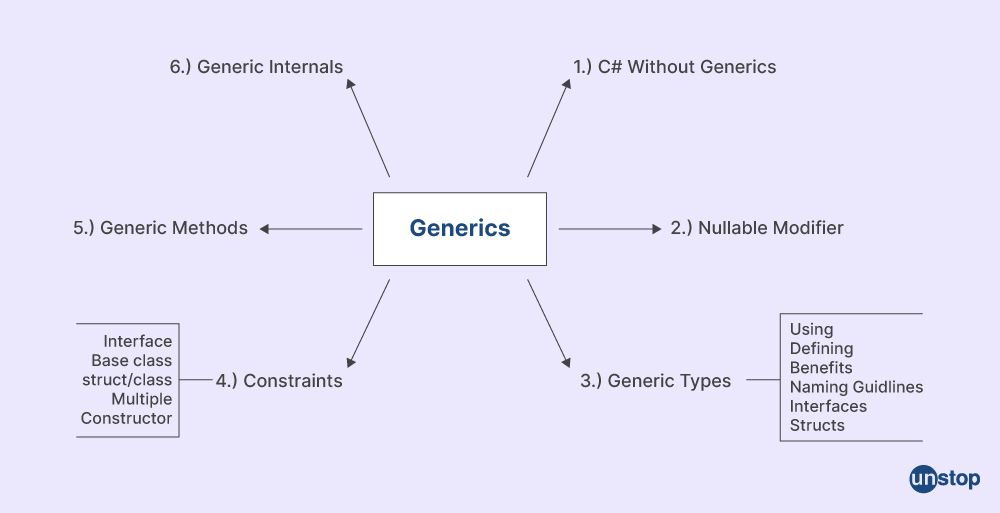
Q49. What methods are available for generating hash codes from strings or other types within the .NET framework provided by Microsoft through its use of the language C#?
The two most common methods available for generating hash codes from strings within the .NET Framework provided by Microsoft using C# are SHA256Managed and MD5CryptoServiceProvider inside System.
Q50. Which application should one use for accessing source code files written specifically for working with languages?
To work specifically with languages such as Visual Basic .Net, including writing programs utilizing their syntax structures, one should typically use an Integrated Development Environment (IDE) that provides a text editor capable of running under Windows OS platforms like PCs equipped installed therein while simultaneously also supporting compilation services too so necessary commands can get executed properly after coding instructions have been written.
Upgrade your skill set! Check out Unstop Pro to step-up
Q51. How is memory location managed when executing instructions within functions running under a looping structure written?
The memory location is managed by utilizing pointers in conjunction with looping structures to track what memory addresses have been allocated for each instruction requiring runtime considerations due to being located at different areas within the memory location.
Q52. How is memory allocation handled by the .NET Framework when creating instances and objects of a given C# class?
When creating instances and objects of a given C# class, .NET Framework handles memory allocation assigning separate blocks within the heap section, which are further divided according to specific size characteristics upon completion of object construction successfully.
Q53. What is a popular programming language in C#?
Microsoft created the well-known programming language C# as a component of the.NET Framework.
Q54. What are the formal parameters in C#?
A formal parameter is a placeholder representing an object or data structure in memory that can be accessed and manipulated within the body of code associated with this particular procedure or function when called upon in C # codes.
Q55. How do you handle run-time errors in C#?
Runtime errors are typically handled using try/catch blocks, which allow developers to detect and handle exceptions before they cause application crashes in C # programs.
Q56. Explain the explicit conversion process and implicit conversion process used in C#?
Explicit conversion processes require explicit casts for converting one type into another. In contrast, the compiler automatically performs implicit conversions at compile time due to its safety considerations, thus avoiding runtime errors in C # codes.
Q57. What is the newline character for writing code with C#?
The newline character used when writing code with C #is \n (forward slash + n).
Q58. How can arguments by reference be passed using C#?
Arguments by reference can be passed using pointer variables in C # languages where pointers store addresses instead of values directly like primitive types like int, float, etc., therefore, manipulating original value without having to create copies of them for passing more effectively than arguments by value method without sacrificing any performance impacts on program execution times dramatically as well long term memory usages on critical system resources significantly increasing overall system efficiency overall.
Q59. What does creating a single unit of code with C# mean?
A single unit of code in C ]#refers to a self-contained module or set of instructions that can be called upon separately from other program parts; such units are commonly associated with objects and classes.
Q60. How can one obtain a stack trace when a running code is written with C#?
A stack trace is obtained by enabling debugging mode when compiling programs written with C# as it keeps track of where each procedure is being executed, so any errors occurring while running the program can be promptly located for further investigation as well ideally resolved quickly without having to consider administrating or revoking any existing applications.
Q61. What advantages does the StringBuilder class provide over traditional string manipulation techniques in C#?
The StringBuilder class provides numerous advantages over traditional string operations, including better performance gains due to memory optimization techniques involved since no additional buffers for manipulating values instantly are required to get desired results quicker whenever string operations, specifically interaction mentioning as might be another wise be expected while utilizing standard methods like concatenations to create desired outcomes.
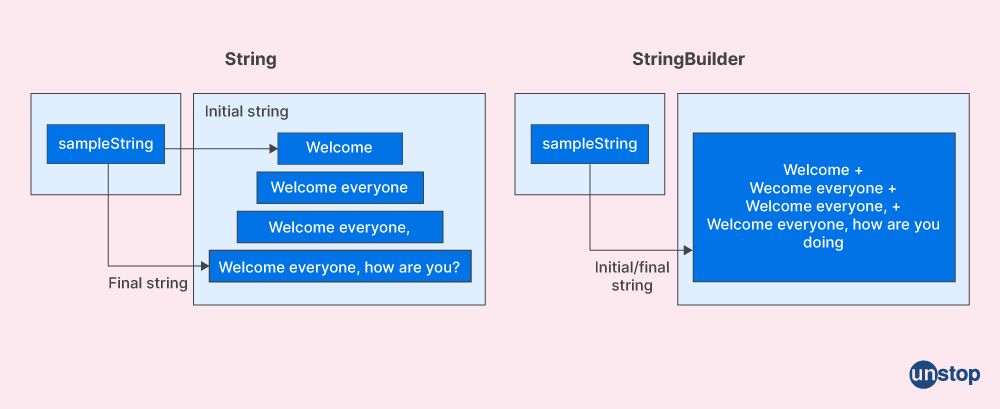
Q62. How would you define a single class C#?
A single class in C # refers to a programming construct that contains methods for defining behavior, properties for containing data, and events that allow external elements like users or other applications to respond correspondingly to the defined characteristics of this single class accordingly to not only exhibits purposes but also provide practical functionality to this particular class which otherwise normally would not be available.
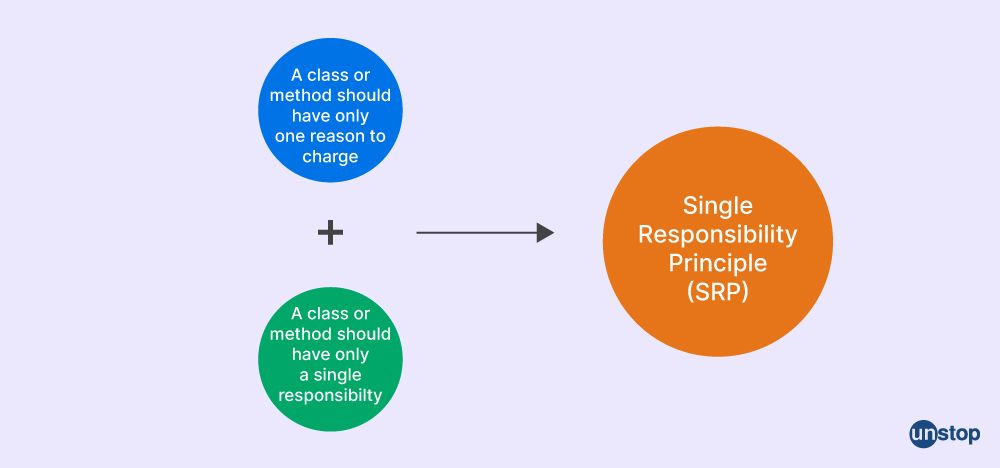
Q63. Explain what an interface class is and how it differs from other classes in C #.
An interface class in C# is an abstract programming construct that contains virtual methods, properties, and events for governing the behavior of other classes that implements them, thus enabling developers to easily expandability of the system concerned as well consolidate all functionalities associated with specific classes into others more suitable for better code organization and maintenance.

Q64. Are there any special methods that must be defined for each interface created within C#?
Yes, special methods such as Initialize Methods (Init) must be defined for each interface created within C# codes to interact with any objects or parameters required from them; otherwise, these interfaces will only remain empty templates without any potential effects such as might be necessary for those instances in situations where fully packaged interfaces are preferred rather than their open counterparts.
Q65. What is the purpose of the read-only keyword in C#?
The read-only keyword is used to specify that the value of a field or property cannot be modified after initialization. This allows for improved performance and better safety against accidental modification since any attempt at changing its value will result in an error.
Q66. How does an abstract keyword differ from a partial keyword in C#?
Abstract methods are meant to be implemented by derived classes and serve only as placeholders that must be overridden when subclassing from an abstract class in C# applications. In contrast, partial keyword defines parts of a given type within different source files so they can all work together collectively once compiled into one application assembly file without having to define them directly within the same file or type definition block.
Q67. What type of exception can be thrown by C# code?
Several types of exceptions can occur while running code written for the C-sharp language:
- System Exceptions (elements like OutOfMemory).
- Application Exception (custom errors thrown for specific cases based on logical tests).
- ArithmeticExceptions (when operations fail due to arithmetic logic).
- IOExceptions(for parsing through streams of data).
Q68. List and explain various conversions available when using C# programs.
There are several type conversions available when programming with C#. They range from straightforward ones like explicit or implicit castings between related types to more intricate approaches dealing with custom type casting overloaded functions and/or using parsers for converting raw strings into desired formats such as integers, doubles float, etc.
Q69. Describe what an original string means in relation to programming with strings in C#.
An original string is a string data structure that has yet to be modified in terms of its content (i.e., it holds the same value assigned upon initialization). It is an essential concept for understanding how programs written on C# generally handle manipulated text information.
Q70. Explain how String Buffer works compared to other data structures used for manipulating strings within a program written on the platform of c# language.
String Buffer is an efficient means used by applications coded in the platform language C# manipulating text. It essentially works by storing each character inside an indexed array supporting higher speed performance levels required in operating environments highly sensitive towards time constraints associated with computer activities.
Q71. Name and describe three generic collection classes for programming with C# language.
Common generic collection classes used when programming with c-sharp language include Stack<T>, Queue<T> and Dictionary <TKey, TValue>.
These are useful for allocating memory inside run-time applications to hold specific information like string types strings within an array or hashtable structures.
Q72. How is the class keyword used when writing code on the platform of C# language?
In C#, the class keyword is used to define a class, which is a fundamental building block of object-oriented programming (OOP). A class is a blueprint or a template that defines the characteristics and behavior of objects. Objects are instances of classes, and they can have their own unique data and functionality.
Q73. Illustrate what a code block means while coding through C# language.
A code block is a program section executed as one consecutive sequence, usually inside an if statement or loop. This means that all the statements contained within the same begin-end pair will be evaluated before control returns to the line following the end delimiter, meaning lines found nested performance operations can take place, avoiding having scatter data-related pieces randomly across application execution, limiting the potential risk of introducing errors
74. Describe how native code may interact within programs written via sharpe language?
Native Code (also known as machine language ) is instructions written using assembly language, which is then translated into a binary format understandable by computers running C# applications.
It provides low-level access hardware features like memory management input/output device communication software that executes programmed tasks correctly despite any interference present during run time.
Conclusion
Excelling in a C# interview needs a good grasp of the language, starting from fundamental concepts to advanced features. Proficiency in object-oriented principles, asynchronous programming, and LINQ data querying is imperative for success. Moreover, staying attuned to C#'s evolution is crucial, given recent enhancements like those in C# 9 and 10, which introduced record types, top-level programs, and improved pattern matching. Additionally, innovations such as .NET MAUI for cross-platform development and features like Hot Reload and Source Generators further highlight the dynamic nature of C#. Whether preparing for interviews or aiming to enhance coding skills, a strong foundation in C# fundamentals coupled with awareness of the latest advancements is key to thriving in the ever-changing realm of software development.
This wraps up the tally of important C# interview questions. Wishing you the best for your next interview!
Suggested reads:
I am a storyteller by nature. At Unstop, I tell stories ripe with promise and inspiration, and in life, I voice out the stories of our four-legged furry friends. Providing a prospect of a good life filled with equal opportunities to students and our pawsome buddies helps me sleep better at night. And for those rainy evenings, I turn to my colors.
Login to continue reading
And access exclusive content, personalized recommendations, and career-boosting opportunities.
Subscribe
to our newsletter
Blogs you need to hog!

This Is My First Hackathon, How Should I Prepare? (Tips & Hackathon Questions Inside)

10 Best C++ IDEs That Developers Mention The Most!

Advantages and Disadvantages of Cloud Computing That You Should Know!













Comments
Add comment